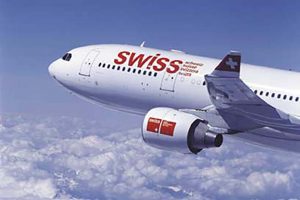A code-share close-connections can ruin a trip

In this case, my clients had used miles for one ticket, a United Airlines standard award, which takes double the mileage of the more limited “saver” award, and they then had me purchase a second ticket, both in business class, roundtrip from San Francisco to Zurich.
On the outbound, they flew United to Frankfurt and connected to Swiss, with a four-hour layover. Since the flights were on time, they spent a lot of time in the Frankfurt Airport.
On the way back, United offered them a London connection, Swiss for the first flight, United for the second flight. (The two flights actually both showed United flight numbers in the airline’s computer.) The connection was only 70 minutes, but since the two carriers are Star Alliance Partners and use the same terminal at Heathrow Airport, it seemed makeable.
Well, as readers have probably guessed, 70 minutes, in this case, turned out not to be enough. It was a big code-share, close-connection hassle.
The plane from Zurich ended up about 20 minutes late. Plus, there were several connecting passengers and United had closed the London to San Francisco flight well in advance of departure. Everyone on the Swiss flight missed the connecting flight. United couldn’t rebook them until the next day. Swiss at least then paid for their hotel nights.
To add insult to injury, the nonstop the next day from London to San Francisco was delayed several hours due to fog and then ended up having to stop in Chicago.
It could have been worse. This all happened on the return flight, so it’s not as if the travelers missed a tour departure or a cruise. But, this highlights the dangers of assuming that just because an airline books a ticket, the code-share close-connection is safe, ESPECIALLY when two different airlines are involved.
My clients reported that United in London dismissed the Swiss passengers by saying they had closed the flight an hour in advance, which is standard international procedure for someone just checking in for the first time. However, my clients all had checked in hours earlier in Zurich. For some reason, that didn’t count, even though the Swiss agent in Zurich had issued boarding passes for both flights.
Now, with an online (i.e. one airline to the same airline) connection, carriers DO know how many connecting passengers they have on a given flight, which helps them decide whether or not to hold it. Not surprisingly, the number of code-share close-connection passengers with elite status is one factor that makes a difference, although these two clients were “1ks,” United’s second highest category. Obviously, these code-share connections are not communicated well.
Perhaps there were other factors involved that day. Managing flight departures is a complicated business, but the short version is that tight connections are always at least a bit risky. Connections between two different airlines, even if they have the same airline flight number, are riskier still.
Caveat emptor.
Whenever connecting times seem too short, even when transferring between alliance code-share partners, there can always be code-share close-connection hassles.
Janice Hough is a California-based travel agent a travel blogger and a part-time comedy writer. A frequent flier herself, she’s been doing battle with airlines, hotels, and other travel companies for over three decades. Besides writing for Travelers United, Janice has a humor blog at Leftcoastsportsbabe.com (Warning, the political and sports humor therein does not represent the views of anyone but herself.)



